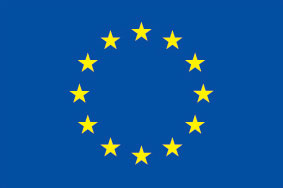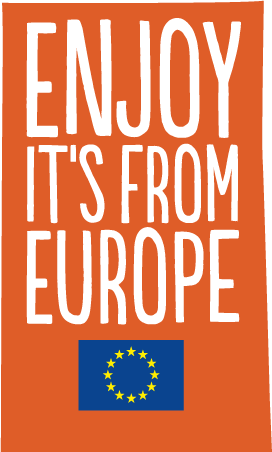Vietnam’s pork industry is undergoing a dynamic phase of recovery and adjustment. Despite ongoing disease pressures and regulatory complexity, the market continues to show strong import demand and structural consolidation.
In October 2025, live hog prices across Vietnam fluctuated between VND 52,000 and 57,000 (1.71EUR and 1.88EUR) per kilogram, showing mixed movements compared with September. Northern provinces reported sharper declines of VND 1,000–7,000 (0,03295EUR – 0,23065EUR) per kilogram during the month, while central and southern regions also saw intermittent drops. Although prices remain below last year’s levels, production is stabilising national pork output reached 1.34 million tonnes in Q3 2025, up 2% year-on-year, according to Vietnam’s General Statistics Office.[1]
Over the first nine months of 2025, total pork output increased by 4.6% year-on-year to 4.04 million tonnes, reflecting herd recovery and improved biosecurity at large-scale farms. Nevertheless, high feed costs and recurrent African swine fever (ASF) outbreaks—over 970 incidents across 33 provinces in the first seven months—continue to pressure smaller producers and restrain further growth. The industry’s gradual restructuring is shifting production from smallholders to integrated, better-capitalised companies, accelerating modernisation and efficiency gains.[2]
Vietnam’s reliance on imported pork remains moderate, covering roughly 4% of total domestic output, but imports play a vital role in balancing supply, stabilising prices, and supporting the processing sector. According to Vietnam Customs, the country imported 282,000 tonnes of meat and meat products in Q3 2025, worth USD 547 million, up nearly 20% quarter-on-quarter. Pork imports alone rose sharply to 75,200 tonnes, valued at USD 134 million (115,3 million EURO), an increase of 116% in volume compared to Q2 and 158% year-on-year.
Russia, Vietnam’s largest pork supplier, delivered 46,100 tonnes in Q3 (50.24 million EUR), nearly quadrupling its volume from a year earlier. Over the first eight months of 2025, Russia held a 46% market share (61% in Q3), followed by Brazil (33%), Canada (5%), Spain (4.5%), Germany (3%), and Poland (2.7%). Other suppliers together represented 6% of total imports. The average import price of frozen or chilled pork stood at USD 2,688 (2,311EUR) per tonne, up 17% from 2024.
The dominance of Russian suppliers reflects several structural advantages: duty-free access, strong government support, and sustained logistical links built since Vietnam first approved Russian pork exports.
Meanwhile, the US is seeking to strengthen its position in the Vietnamese market through a recently announced bilateral trade agreement. Although details remain limited, US pork and pork variety meats could see tariff reductions from 10% and 8%, respectively, potentially enhancing competitiveness in this highly price-sensitive market. US exporters currently face higher duties than most competitors: pork from Russia and CPTPP members enters Vietnam duty-free, while EU pork tariffs are being progressively reduced to zero by 2027 under the EU–Vietnam Free Trade Agreement (EVFTA). If implemented, the US tariff cuts, combined with the removal of several non-tariff barriers, could substantially boost American exports, currently valued at under USD 10 million annually.[3]
While Vietnam’s import demand is expanding, market access procedures remain a critical challenge for foreign exporters. Administrative delays and changing registration requirements have slowed or blocked entry for several EU MS.[4] For example, some Spanish exporters have faced disruptions after Vietnam required to list precise product types (such as “back fat” rather than “cutting fat” or specific offal categories), instead of generic product names. This procedural change has halted multiple commercial transactions pending updated documentation.
More broadly, over 50 EU applications for animal product exports to Vietnam remain pending, some dating back to 2015. Despite commitments under the EVFTA, progress on sanitary and phytosanitary (SPS) approvals has been slow. The European Commission continues to urge Vietnam to set clear timelines and streamline authorisations, emphasising that once one EU MS gains approval for a product, subsequent applications from others should follow an accelerated process.[5]
Nevertheless, tariff conditions for EU pork are improving. Under the EVFTA, frozen pork currently faces a 3.7% tariff, which will be reduced to zero by 2027, enhancing competitiveness against suppliers from Russia and CPTPP countries, which already enjoy duty-free access.
The list of foreign enterprises qualified to export meat and animal meat products to Vietnam can be accessed from the website of the Department of Animal Husbandry and Veterinary Medicine.[6] Portugal’s application for pork market access remains under review and is expected to advance toward approval in the near future.
Despite intensifying competition and regulatory hurdles, Vietnam remains an attractive long-term destination for European pork. The country’s consumption base is expanding alongside rising incomes, urbanisation, and dietary diversification. Domestic supply growth is likely to slow due to disease management costs and farm consolidation, leaving room for reliable, high-quality imports aligned with food safety and sustainability standards. For European exporters, success in Vietnam will depend on close coordination with local importers and authorities, proactive adaptation to regulatory changes, and emphasis on traceability, animal welfare, and quality assurance.
[1] Chăn Nuôi Việt Nam (November 4, 2025). Bản tin thị trường ngành thịt trong nước và thế giới tháng 10/2025.
[2] ASEM Connect (October 30, 2025). Vietnam’s pork market in October 2025. Vietnam Industry and Trade Information Centre (VITIC). Ministry of Industry and Trade.
[3] U.S. Meat Export Federation (July 9, 2025). ‘Must-haves’ for U.S. pork in a Vietnam trade agreement. National Hog Farmer.
[4] Guarascio, F. (September 23, 2025). As trade deficit grows, EU to urge Vietnam to remove barriers, sources say. Reuters.
[5] Access2Markets (October 15, 2025). Trade barriers – Delays in market access authorisation procedures for animal products. European Commission.
[6] Department of Animal Husbandry and Veterinary Medicine (n.d.). List of foreign enterprises qualified to export meat and animal meat products to Vietnam.




